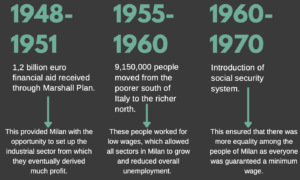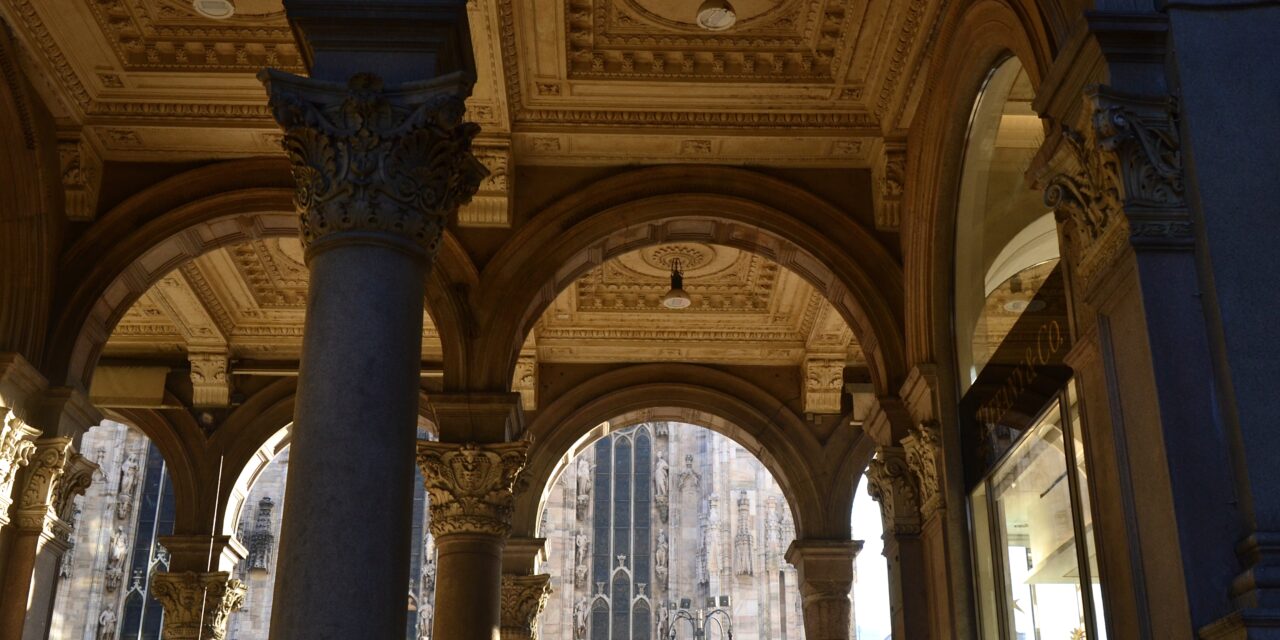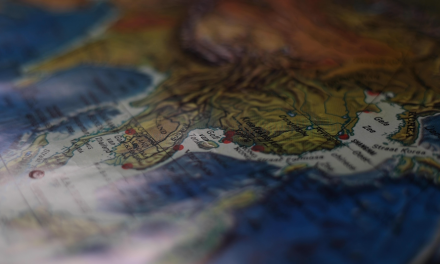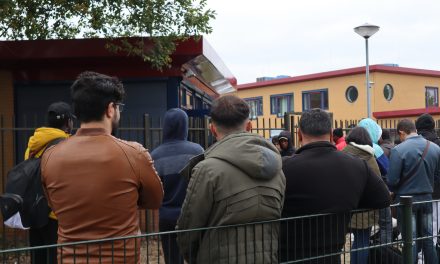It is often thought that Milan owes its current prosperity to the fashion industry alone, but nothing could be further from the truth. Looking back into the city’s history, the causes of its happiness emerge.
An explanation for the wealthy situation in Milan according to student Commercial and Business Economy at the University of Milan Victor Blanga: ”As a city of fashion and relatively near to other wealthy European countries, Milan probably attracts a different public. Milan’s infrastructure also ensures a relatively better business climate. It therefore attracts more international companies. Wages are also higher there.”
”We as entrepreneurs in the fashion industry unknowingly benefit from the success of all other sectors in Milan” says a shopkeeper in one of the busiest shopping streets around the famous Duomo.
The Italian government was able to attract most of the companies to Milan as they maintained good public services like transportation. For example, public transportation in Milan is way better and organized than other cities in Italy.
Such little details are important and effective to bring companies and investors to the city. More companies and investors offer more room to grow. About such clusters, certain specific knowledge is then available locally, which means that more innovations can take place. For example: if students are already studying there and doing an internship, they will take their knowledge from one company to another. Also, buyers of designer fashion will go to Milan. Such effects of such a cluster naturally creates huge differences in the base already. This applies not only to the world of fashion but also, for example, to financial and service companies. And cars, books, television and music, for example, also have such clusters in Milan.
”In my field, we make the most profit in Milan and its surroundings. There’s just a lot of commotion here, which results in a lot of orders from private entrepreneurs but also from municipalities.’’ says energy engineer Hussein Mehanna.

After World War II, consumption increased and Milan became a city where brands did well. This is seen this in the fashion sector, for example. Milan has grown into a cluster of fashion companies, allowing them to benefit from (positive) external effects.
But in addition to all this prosperity, there is also a downside to the economy. Taxes in Italy are the highest in all of Europe. Yet some 5 million people pay the tax for the total population of 60 million. A shopkeeper calls these people ‘’gli scrocconi’’ which means freeloaders. These are the people who belong to the 91.6% who pay too little or no tax. These people do not work or do not give enough money to the tax authorities. This ensures that the government has no idea who should pay how much: ‘’8,4% of the Italian population bear the bulk of the collective tax burden” says Francesco Vecchi.

One of the many fashion icons that are central to the fashion industry in Milan. Picture taken by: Anouk de Kruijff.
The people of Milan would say that these are the main causes of Milan’s prosperity. ‘’Like attracts like’’, so to speak. And so it reinforces each other.
A certain path dependency ultimately gives Milan an advantage that many other Italian cities do not have.




